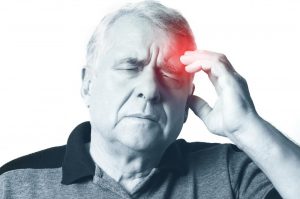Top Warning Signs and Symptoms of a Stroke

Did you know that a stroke is the no.5 cause of death and a leading cause of disability in the United States? It is a disease that affects the arteries leading to and within the brain.
A stroke occurs when a blood vessel that carries nutrients and oxygen to the brain ruptures or is blocked by a clot. As this happens, part of the brain does not get the blood it needs. Then, brain cells die.
However, when it comes to signs and symptoms, they vary from person to person. For example, a person who had a mild stroke may experience weakness in one arm or leg. However, a severe stroke may paralyze one side of the entire body.
Please read the top warning signs and symptoms of a stroke that will help an individual to recognize and treat them.
Face Drooping
The face of a person with a mild stroke may look like it’s drooping or uneven. If you ask the person to smile, it looks uneven. The eyes are dull, and the face looks asymmetrical.
Weakening of One Side
92.6% of stroke patients recognized sudden numbness on one side as a symptom of their stroke.
Strokes can weaken one side of an arm or leg, that hampering movement. If you ask the person to raise or rotate both arms at the same time, you may notice the difference. The movement of one arm will be more labored than the other. Similarly, one leg may also be weaker than the other, and there may be a visible difference in the movement of limbs.
Difficulty in Speaking
People having a stroke may feel the difficulty in speaking. They may stammer or may not be able to talk at all. If you ask the person to speak a simple sentence, the abnormality in speech can be noticed.
Loss of Balance or Coordination
A person affected with stroke may experience loss of balance, coordination, and are also prone to falling and general imbalance. There is a chance that a senior person may face difficulty in walking, standing for a few minutes or driving a vehicle.
According to stroke related statistics published on CDC, strokes are known to reduce mobility in more than half of stroke survivors aged 65 and over.
Therefore, it is recommended that a stroke survivor should not drive a vehicle until they are under treatment and have recovered completely.
Severe Headache
Sometimes people experience a severe headache without any known reason or history of headaches. A severe headache is considered as a sign of stroke, and the person should be immediately taken to the nearest medical facility.
Summing Up
Not every warning sign is present in every stoke. Sometimes, signs disappear within a few seconds.
If someone you know experiences one or several symptoms of a stroke for even a few seconds, you must consult a medical facility or call medical emergency services.
If someone you know or love has suffered from a stroke in the past, you can have a professional caregiver for seniors help them recover. A caregiver can help them move, feed them and help with essential activities. Demonstrate your love and care by hiring a professional caregiver for them until they recover completely from the stroke.